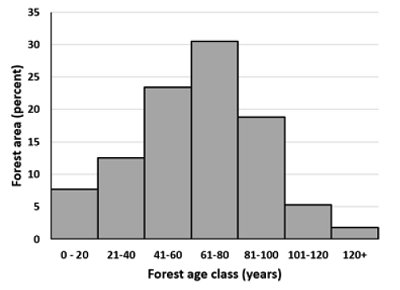AgEBB-MU CAFNR Extension
Green Horizons
Volume 20, Number 2
May 2016
Future of Northern Forests
By STEVE SHIFLEY | Research Forester, U.S. Forest Service
In the latest Northern Forest Futures report, Future Forests of the Northern United States (http://www.treesearch.fs.fed.us/pubs/50448), scientists describe how past trends and today's choices might change the future forest landscape of the northern United States. The report published by the U.S. Forest Service Northern Research Station addresses themes relevant to sustainable forest management: biodiversity, productivity, health, water, biomass, carbon, timber products, non-timber products, recreation, social frameworks, legal frameworks, and urban forests. Findings are applicable to the 20 states bounded by Maine, Maryland, Missouri, and Minnesota. Anticipated changes in forest diversity and productivity are examined in detail for seven alternative future scenarios from the baseline year of 2010 to 2060. These trends can be readily examined by state and time period using the web-based Northern Forest Futures Data Dashboard (http://www.nrs.fs.fed.us/futures/predict/).
 |
Figure 1. Forest area by age class for |
One of several issues highlighted by the Northern Forest Futures project is the lack of forest age-class diversity. About 55 percent of forest area in the North falls between 40 and 80 years old (Figure 1). The age class distribution for each of the 20 included states has a similar pattern, as does the age class distribution of each forest-type group except aspen-birch. This age class distribution is a product of forest history. In the 1800s and early 1900s, loggers moved from east to west across the region. The wave of exploitative harvesting was followed by decades of land clearing, farming, frequent human-set wildfires to increase forage, and widespread woods grazing by livestock. By the mid 1900s wildfire suppression improved, livestock were gradually removed from the woods, and unproductive farms were abandoned to revert back to forest. Forests recovered remarkably, but one outcome is the clustered distribution of age classes we have today.
Forest diversity is crucial to forest sustainability. It is impossible to anticipate all the natural and human-caused disturbances that future forests will face. For example, there is broad consensus that the climate will change and affect forests, but details are lacking about when and by how much. Numerous invasive insect and plant species are spreading through Northern forests, and new ones are inevitable. In general, greater forest diversity makes forests more resilient and better able to absorb future disturbances while continuing to function as forests. Forest age class is one of the simplest indicators of forest diversity. Age class is a simple surrogate for stand size structure and function; young forests provide different habitat, products, and ecosystem services than do middle-aged or old forests.
It is hard to look at the current age-class distribution of northern forests and not be concerned about lack of diversity and therefore lack of resilience. Forest age-class diversity would increase with increases in the area of young and old forest habitat. At current rates of forest disturbance, the bell-shaped (unimodal) age class distribution is expected to gradually shift to the right, resulting in greater acreage of old forest habitat. It appears that creating more young forest habitat will require active management, and that process is often constrained by social, economic, and logistical barriers.
A century ago, many of the people living and working among forests were focused primarily on surviving another year. Unlike us, most people living in that era had little knowledge of how their actions would alter future forest diversity and resilience. But just as surely as their actions shaped the condition of today's forests, our actions and inactions will shape the condition of the forests for decades to come.
The information provided by the Northern Forest Futures Project is one resource to help guide discussion as forest owners, managers, and policy makers consider ways to sustain the health, productivity, diversity, and resilience of forests which provide for the well-being of the 125 million people who currently live in the 20 Northern States and for 32 million additional people expected by 2060.
For more information about this and many other topics covered by the Northern Forest Futures Project, please see http://www.nrs.fs.fed.us/futures/.
